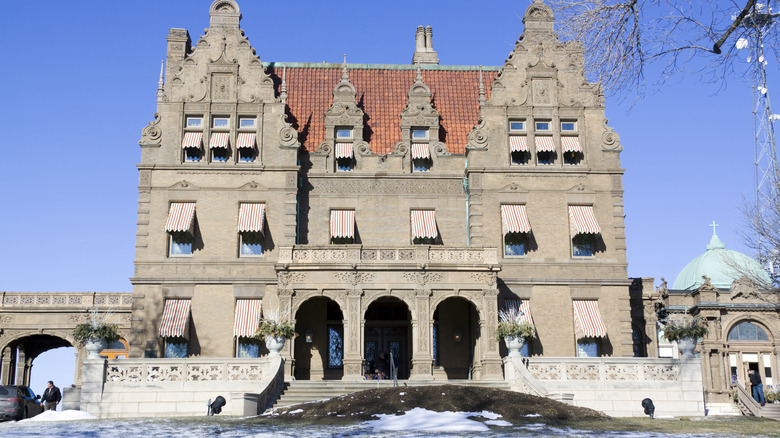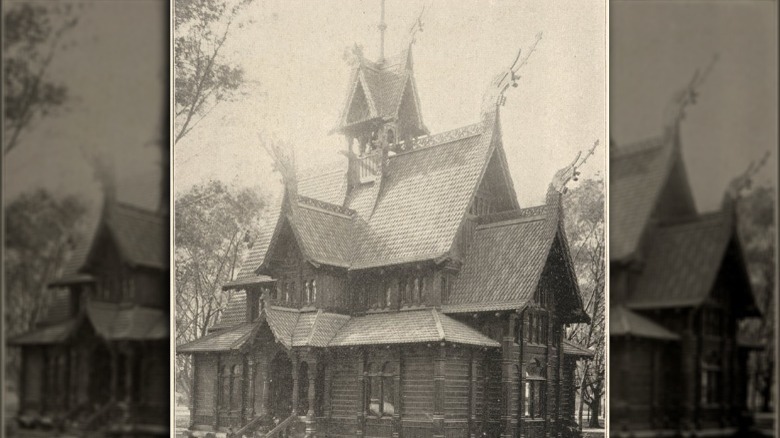The Truth About The Carefully-Preserved Buildings From The 1893 World's Fair
The World's Columbian Exposition of 1893, also known as the World's Fair, served to reintroduce Chicago, Illinois as a major American city. As reported by the Chicago Architecture Center, Chicago was chosen over several other United States cities, including New York, Washington, D.C., and St. Louis and at the time, it was the largest American world's fair in history, with over 150,000 people attending each day over its six-month run. The World's Fair introduced the very first Ferris wheel, popularized the Beaux-Arts architecture style, and the site of the fair was nicknamed "White City," due to the massive white buildings that emphasized the city's comeback from the Great Fire of 1871 and its focus on industry and innovation.
The buildings of the World's Fair were, for the most part, meant to be temporary structures that came down at the end of the exposition. However, there are still two buildings built for the Fair that are preserved and reside in new locations. One is the Pabst Brewery pavilion, which lives on today as the gift shop of the Pabst Mansion in Milwaukee, Wisconsin; in the photo above, its copper dome can be seen to the right of the main house. Per the Milwaukee Journal Sentinel, it was at the World's Fair that Pabst received the "blue ribbon" that is still featured on the beer's cans and bottles to this day. The mansion has been open to the public as a museum since 1978; the pavilion was hauled to the mansion right after the fair.
One World's Fair building has traveled thousands of miles
Another preserved building still standing to this day is back in its original home country. Per the World's Fair Chicago 1893 website, the Norway Building has traveled over 10,000 miles over 125 years. The building (shown above) was constructed near Trondheim, Norway by M. Thams & Company builders and shipped over to Chicago on March 15, 1893. It arrived a month later and opened in mid-May, serving as the headquarters for the Norway Commission during the fair. The building contained few displays, but was an attraction in and of itself, with its appearance similar to a medieval church, and a gabled roof decorated with carved dragons, evoking Viking ships.
After the fair, the building was purchased by an Exposition board member, Norwegian-American Cornelius Kinsland Billings, president of the People's Gas Light and Coke Company of Chicago. He had it deconstructed, moved, and reconstructed at his estate in Lake Geneva, Wisconsin. The building's ownership changed hands a few times over the years. In 1935, another Chicago Norwegian-American businessman, Isak Dahle, bought it and moved it to Blue Mounds, Wisconsin, where it was part of a Norwegian heritage museum until 2012. When the museum closed, descendants of the original craftspeople who constructed the Norway Building sent over a team of builders from Norway who disassembled the building, brought it across the ocean to Orkdal, Norway, and reassembled it. It is now known as the Thams Pavilion and, per Visit Norway, is open for guided tours.

